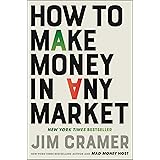With global financial markets often navigating turbulent waters, many investors seek steadfast anchors for their portfolios. Indeed, as the video above eloquently discusses, gold has historically demonstrated its resilience, delivering an average return of around 9.something percent over the last 40 years. This impressive track record positions gold not merely as a decorative asset but as a strategic investment, especially during periods of economic instability or soaring inflation. However, the world of gold investment extends far beyond traditional jewelry; understanding its diverse forms is crucial for maximizing its potential.
For centuries, gold has captivated human civilization, transitioning from a medium of exchange under the “gold standard” to its current role as a universal safe haven. This inherent value perception means that in moments of extreme economic duress—be it hyperinflation, currency devaluation, or geopolitical crises—investors instinctively flock to gold. Rather than viewing gold primarily as a growth engine like equity, it often serves as a protective cushion or a safety net for a portfolio. Its value tends to hold firm, providing stability when other asset classes falter, thereby acting as a powerful hedge against unforeseen market downturns.
The Enduring Appeal of Gold in India
The relationship between gold and Indian households is particularly unique and deeply ingrained in cultural fabric. An astounding 11 to 12% of the world’s total gold reserves are held by Indian families, a testament to its multifaceted importance. Gold in India is not just an investment; it symbolizes prosperity, social status, and security, especially for significant life events like weddings, where it forms an integral part of traditions. This cultural affinity, coupled with its role as a tangible asset, makes gold a primary consideration for many Indian investors looking to preserve and grow their wealth across generations.
Traditionally, this meant investing in physical gold—jewelry, coins, or bars. However, the financial landscape has evolved significantly, introducing a spectrum of accessible and often more efficient ways to gain exposure to this precious metal. While the emotional connection to physical gold remains strong, modern investment vehicles offer distinct advantages in terms of cost, convenience, and liquidity. Delving into these diverse options allows investors to select a method that aligns best with their financial goals and risk tolerance.
Exploring Diverse Gold Investment Options
Investing in gold today offers a variety of pathways, each with its own set of characteristics. From the tangible warmth of a gold coin to the seamless digital transaction of an ETF, understanding these distinctions is key to making an informed choice. The video above provides a concise overview, but let’s dive deeper into what each option entails, considering their nuances in accessibility, risk, cost, and liquidity.
Physical Gold: Tangible Tradition
Physical gold, in the form of jewelry, coins, or bars, remains the most conventional method of gold investment. Its tangibility offers a sense of security and control that digital forms cannot replicate. You can purchase physical gold from local jewelers, banks, or certified dealers, making it readily accessible for many. Nevertheless, this traditional route comes with several considerations that impact its overall investment efficacy.
A significant drawback of physical gold lies in its associated costs. When buying jewelry, “making charges” can range from 7% to a staggering 12%, immediately reducing the investment’s effective value. Additionally, a 3% Goods and Services Tax (GST) applies to most gold purchases. Beyond the initial acquisition, secure storage in bank lockers incurs recurring annual fees, while the risk of theft remains a constant concern. While selling physical gold is generally easy, obtaining the best market price can be challenging, as purity assessments and potential negotiation often lead to a discount, impacting its liquidity in terms of realizing full market value.
Digital Gold: Modern Convenience
Digital gold represents a convenient bridge between physical ownership and modern accessibility. Investors purchase gold online through various platforms, and this digital ownership is typically backed by an equivalent amount of physical gold stored in secure vaults by the seller. This means you do not physically possess the gold, but you hold a verified claim to it, with the option to take physical delivery if desired. The minimum investment can be as low as 1 rupee, making it incredibly accessible for small-scale investors.
While digital gold eliminates concerns like storage and theft, it carries its own set of considerations. Currently, the digital gold market lacks direct regulation by bodies like RBI or SEBI, introducing a layer of potential risk, even though issues have been rare. Moreover, platforms typically charge a “spread”—the difference between buying and selling prices—which can be around 3%, similar to a transaction fee. When combined with the 3% GST, the total cost can amount to approximately 6%, still significant compared to some other options. Despite these costs, its high liquidity, allowing instant buying and selling via an app, makes it an attractive option for many.
Gold Exchange Traded Funds (ETFs): Market-Linked Purity
Gold ETFs offer a sophisticated way to invest in gold by tracking the domestic price of physical gold. When you purchase a gold ETF unit, you effectively own an interest in an equivalent amount of 99.5% pure physical gold without the hassles of storage or making charges. These units are traded on stock exchanges, much like shares, requiring a demat (dematerialized) account and a broking app for transactions. A single unit of a gold ETF can cost as little as 70-75 rupees, making it highly affordable for even modest investors.
Gold ETFs boast significantly lower costs compared to physical or digital gold. They typically charge an annual “expense ratio” of about 0.5% to 0.75% to cover management and storage fees, alongside minor demat and brokerage charges. While highly liquid on major exchanges, some smaller ETFs might face liquidity issues if there aren’t enough buyers or sellers, potentially affecting the price you get. This makes Gold ETFs a cost-effective and relatively low-risk option for gaining market-linked exposure to gold, ideal for those seeking price appreciation without the physical baggage.
Gold Mutual Funds: Professionally Managed Portfolios
Gold mutual funds provide an indirect route to gold investment, as they primarily invest in Gold ETFs themselves. Think of it as a “fund of funds” where a professional fund manager curates a portfolio of gold ETFs or even gold mining company stocks. This approach offers the benefit of professional management, allowing experts to navigate market fluctuations and rebalance the portfolio, potentially optimizing returns.
Similar to gold ETFs, gold mutual funds are quite accessible, often requiring a minimum investment starting from 100 rupees (NAV of a unit). Their costs, in terms of expense ratios, are comparable to or slightly higher than gold ETFs, typically ranging from 0.5% to 0.75% annually, in addition to demat and brokerage charges. The risk profile is also similar to gold ETFs, primarily linked to gold price movements. Liquidity is generally good, as you can redeem units at the prevailing Net Asset Value (NAV), making them a suitable choice for investors who prefer a hands-off approach to their gold investments.
Sovereign Gold Bonds (SGBs): Government-Backed Security
Sovereign Gold Bonds (SGBs) stand out as a unique and arguably one of the most attractive options for gold investors in India. Issued by the Reserve Bank of India on behalf of the government, SGBs are essentially government securities denominated in grams of gold. When you invest in an SGB, the government takes a loan from you, promising to pay you back the current market value of gold at maturity, plus a fixed annual interest rate. This makes SGBs akin to debt instruments backed by the sovereign guarantee.
SGBs offer unparalleled benefits, starting with a 2.5% annual interest rate paid semi-annually, which is in addition to any appreciation in gold price. There are no making charges, GST, or ongoing expense ratios. A key advantage is the exemption from capital gains tax upon maturity (after 8 years), making them highly tax-efficient. Minimum investment is 1 gram (approximately 7,300-7,500 rupees at current prices). The primary limitation is accessibility; SGBs are issued in specific tranches throughout the year and are not continuously available. While SGBs have an 8-year maturity period, they offer an early exit option after the fifth year on interest payment dates. However, selling before this through the secondary market can sometimes lead to liquidity challenges if sufficient buyers are not available, although the government backing ensures principal safety.
Weighing Your Gold Investment Options: A Comprehensive Comparison
Selecting the best gold investment strategy necessitates a detailed understanding of how each option performs across crucial parameters. As the video highlights, what makes one investment suitable for an individual might not be ideal for another. Therefore, a careful assessment of accessibility, risk, minimum investment, costs, and liquidity is paramount.
Accessibility: How Easy Is It to Invest in Gold?
Physical gold, particularly jewelry, is universally accessible through local shops, offering immediate gratification. Digital gold and gold ETFs can be purchased instantly via smartphone apps, provided you have the necessary accounts set up. Gold mutual funds are also readily available through various investment platforms. SGBs, however, are released in periodic tranches, making their availability intermittent. This means investors must keep an eye on announcements from the RBI or financial institutions to participate during their issuance windows, making them less accessible on demand.
Understanding the Risks of Gold Investments
All gold investments are inherently exposed to price fluctuations in the gold market. However, beyond market risk, specific risks vary. Physical gold faces significant risks of theft and storage complications. Digital gold, while secure in vaults, carries a minor regulatory oversight risk, though no major issues have been reported. Gold ETFs and mutual funds are subject to market liquidity risks, meaning you might not always get your desired price if there aren’t enough buyers or sellers. SGBs, being government-backed, are virtually risk-free in terms of credit default, making them an extremely secure choice for long-term holding.
Minimum Investment Thresholds for Gold
The entry barrier for gold investments varies widely. Digital gold is remarkably inclusive, allowing investments for as little as 1 rupee. Gold ETFs are also highly affordable, with units often priced at around 70-75 rupees. Gold mutual funds typically have higher minimums, often starting at 100 rupees, but still highly accessible. Physical gold’s minimum investment can be substantial, as even a 1-gram coin can cost around 7,300 rupees, and jewelry significantly more due to design and making charges. SGBs require a minimum investment of 1 gram, making them accessible to a broad segment of investors but still higher than digital or ETF options.
The True Costs of Investing in Gold
Understanding the full spectrum of costs is vital, as these directly impact your net returns. Physical gold incurs significant “making charges” (7-12%), 3% GST, and potential locker fees. Digital gold includes 3% GST and a spread of around 3%, totaling about 6%. Gold ETFs and mutual funds are considerably cheaper, with annual expense ratios typically between 0.5% and 0.75%, plus minor demat and brokerage fees. SGBs are the clear winner in terms of cost, having no expense ratio or GST; in fact, they pay an additional 2.5% interest, making them extremely cost-effective in the long run.
Liquidity: How Easily Can You Sell Your Gold?
Liquidity refers to how quickly and easily you can convert your gold investment back into cash without significant loss of value. Digital gold is arguably the most liquid, allowing instant sell-offs through apps. Physical gold can be sold easily at jewelers, but getting the best market price can be challenging due to purity checks and potential discounts. Gold ETFs and mutual funds generally offer good liquidity, allowing trading on exchanges or redemption at NAV, though some smaller ETFs might face minor issues. SGBs are least liquid in the short term due to their 8-year maturity period, although they can be traded on secondary markets, which might not always offer optimal pricing before the 5-year exit option.











